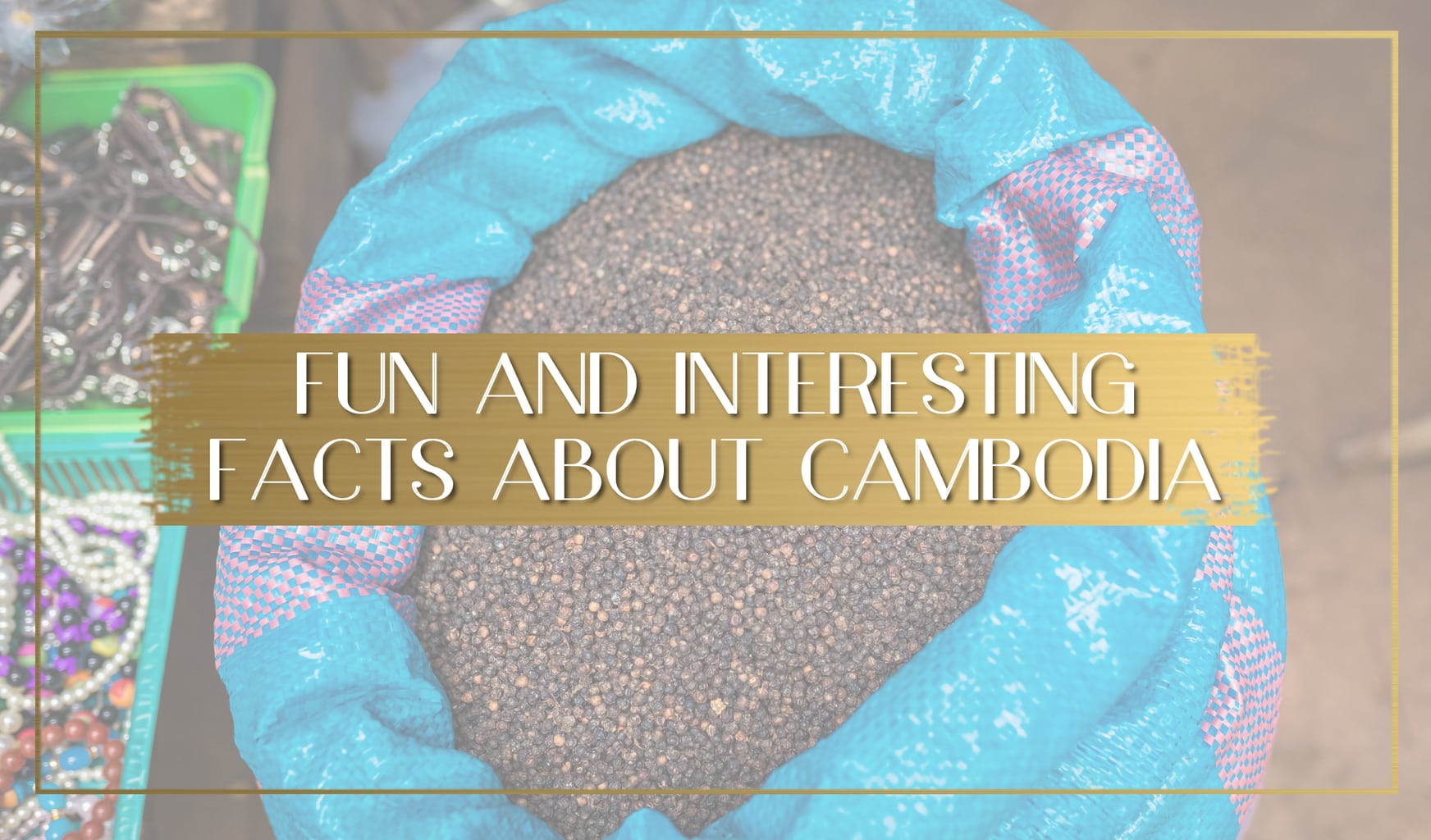
My journey to Cambodia was eye-opening. I had visited Siem Reap and Angkor Wat a few years back for a destination wedding, but this I got to explore some uncharted territory in the provinces that constitute the Wild East or Green Belt.
While the begging situation in Angkor Wat has improved since my last visit, there is still mass poverty throughout the province and the country. I was also saddened to hear my guides and the local businessmen we talked to share the increase in deforestation by corrupt officials and businessmen that are greedily covering the land with hectares upon hectares of plantations.
Luckily, there are some charitable organisations paving the way to a greener, more eco-friendly and sustainable future. Every time I visit Cambodia I feel furious and grateful, curious and shocked, saddened by despicable human acts and by the hope of so many trying to do better for the country.
A mixed bag of emotions you will most likely also feel in this ancient land with a tumultuous history. Here are some facts about Cambodia I learned along the way through talking to guides, hotel and restaurant owners, as well as locals and expats.
1. There is a massive ongoing debate about the origins of Muay Thai
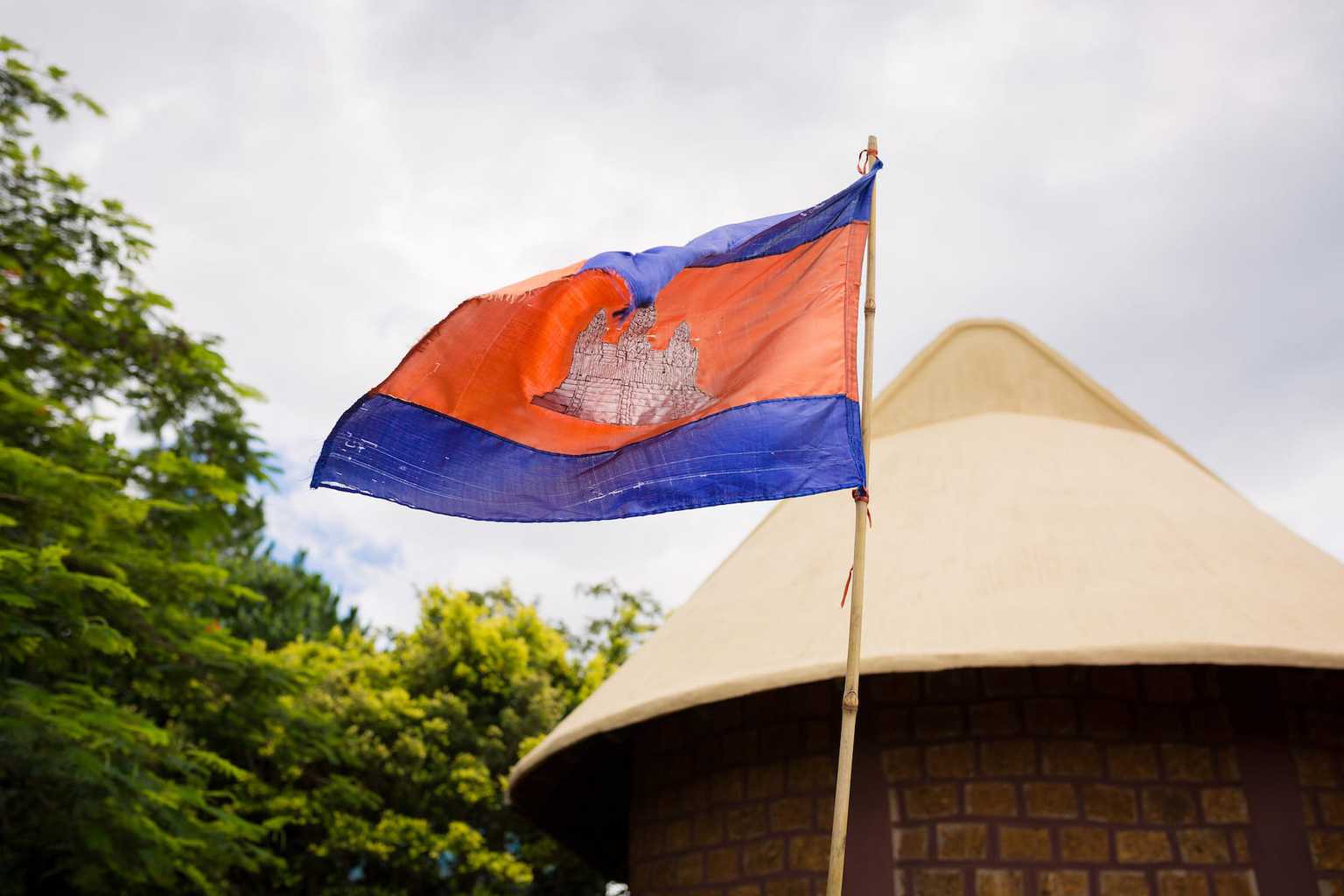
According to the people of Cambodia, at least every single Cambodian I asked, the martial art of Muay Thai does not originate in Thailand. Rather it stems from an ancient Cambodian martial art form known as pradal seray (free fighting), kun khmer or Khmer Kickboxing.
In fact, Cambodia wanted to change the name “Muay Thai” to the more holistic “Sovannaphum boxing” (“golden land boxing” in Khmer) or “SEA Boxing” at the 1995 ASEAN meeting for the King’s Cup Muay Thai competition. This name included all those represented such as Thailand, Cambodia, Laos and Myanmar.
Thailand did not cooperate stating that it was them who made Muay Thai an internationally renowned sport. Ten years later in 2005, Cambodia protested by not entering into the Muay Thai event in the Southeast Asian Games. There is a large debate over what came first and which martial art influenced the other, a sore subject for both countries.
2. All religions as one
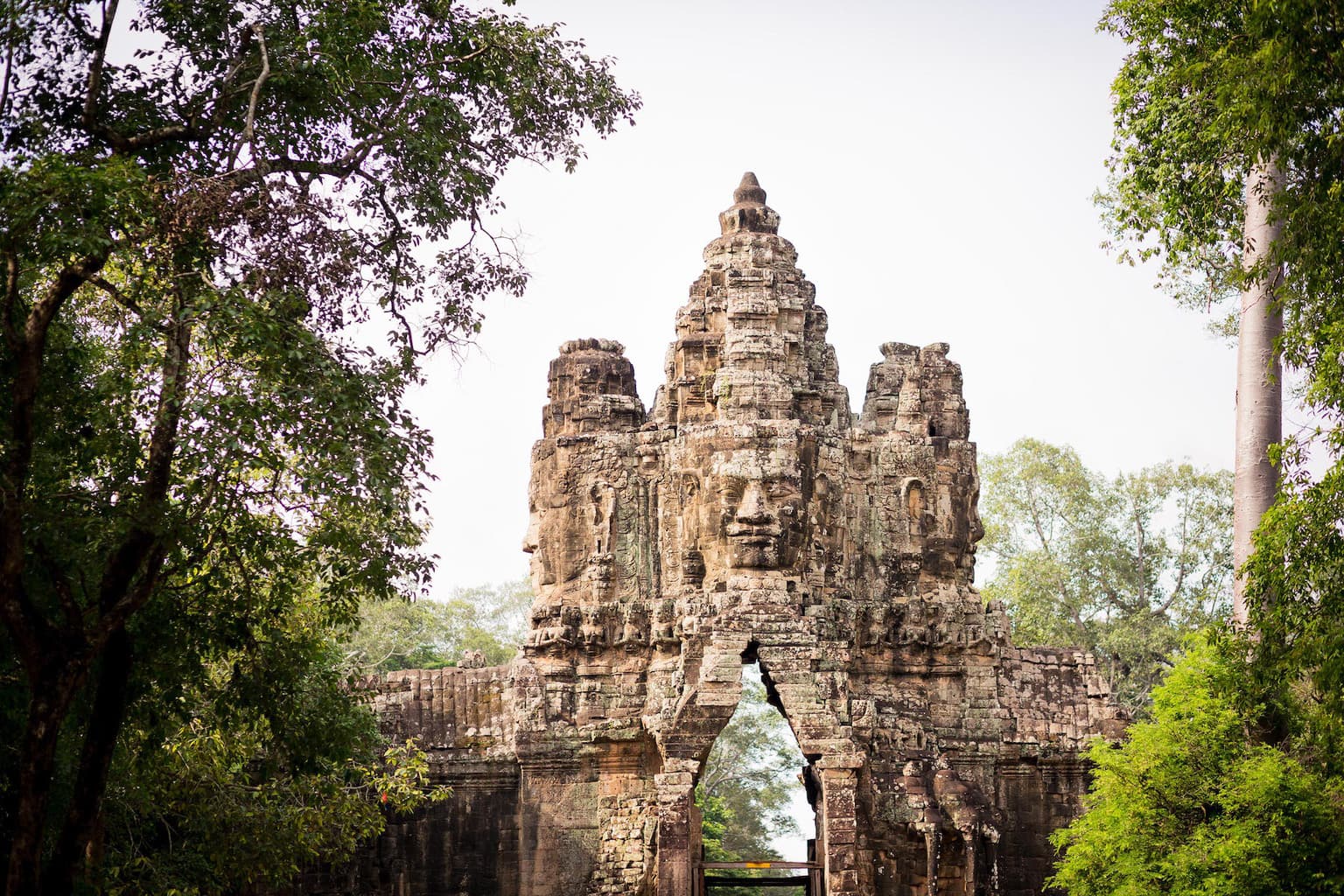
The most admired figure in the annals of Cambodian political history is King Jayavarman VII (pronounced Jaya Vara Mahn). Not only did he win his empire back from the Cham, introduced Mahayana Buddhism to Cambodia and hastily build megalithic structures that constitute the Grand City of Angkor Thom in Siem Reap, but he was also a major proponent of the adoption of all religions.
In his structures, he combined Hinduism, Buddhism and sometimes even Animism to make a truly unique and warm-hearted empire. The greatest possible example is the gate of Angkor Thom.
As you enter, there are 54 gods and 54 demons all pulling Naga (a snake in Hindu mythology) as they churn the of ocean of milk to create immortality. Naga acts as a sort of cosmological rope that joins our world with the Gods in Hindu cosmology. At the top of the gate are four colossal smiling faces with both Buddhist and Hindu significance.
The smiling faces are actually visual representations of the state of mind of the Buddha and not the person himself. Buddha is smiling for compassion, sympathy, charity, and equanimity. Then there is the Hindu side, a depiction of the four-faced Brahma the Creator.
In Hinduism there are multiple gods, but only three main gods, Brahma the Creator, Vishnu the Protector and Shiva the Destroyer (creating the Hindu triumvirate). You will also see Indra, God of rain and sky, riding on his vehicle (or vahana), the elephant called Airavata. Then notice a lotus on the elephant’s trunk – a fine example of Jarawarman VII’s acceptant of both Hinduism and Buddhism.
3. Bayon is a mispronunciation
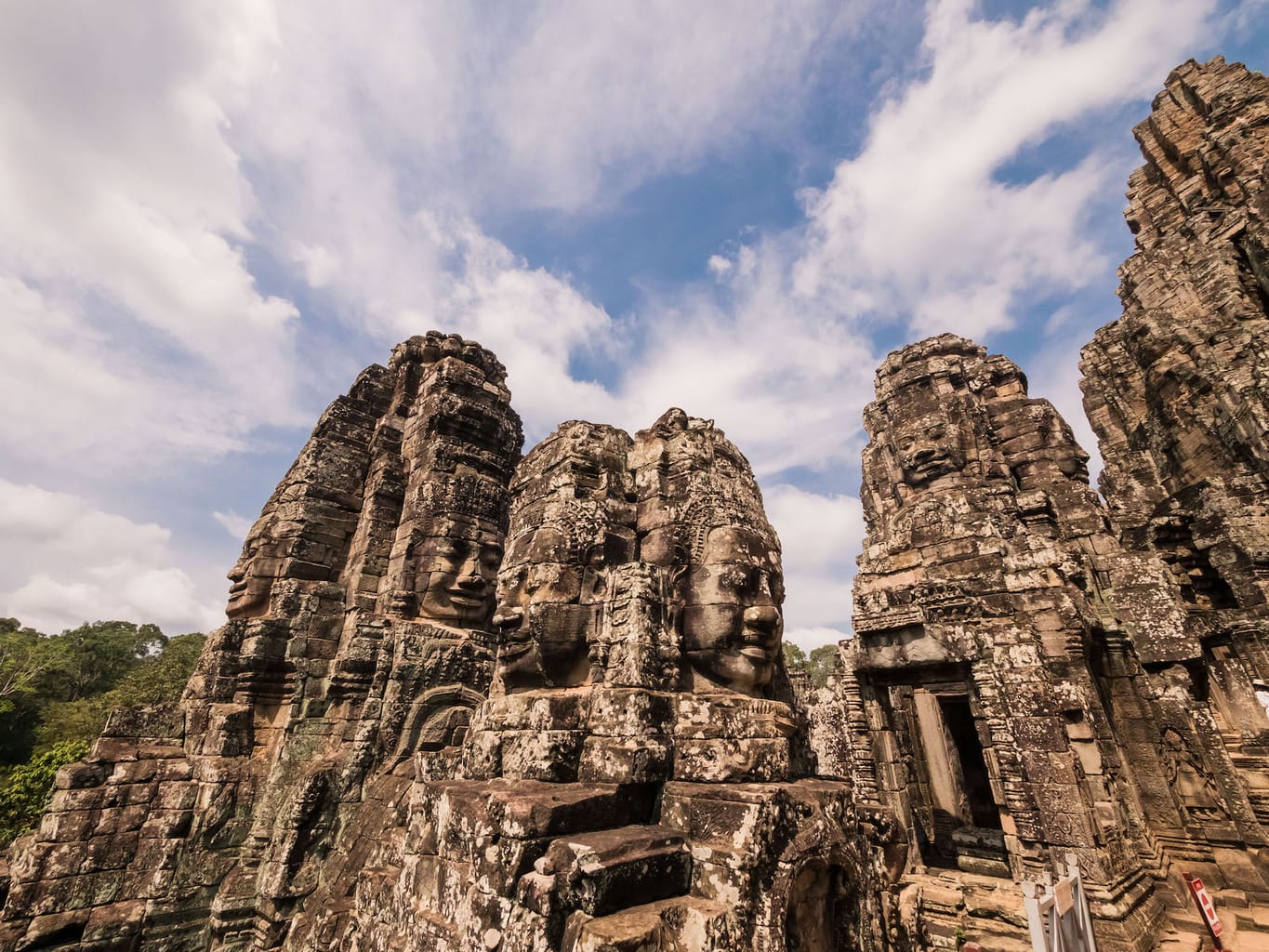
One of the most famous structures in the Angkor complex is the Bayon. But what most people don’t know is that it came about as a mispronunciation. The original Hindu name for Bayon was Jayagiri (or victory mountain).
When the French arrived, they decided to call it Banyan Temple due to its religious imagery and as they didn’t know the original name at the time. They called it Banyan temple due to the Buddhist representations depicted all over (i.e. the Buddha is said to have attained enlightenment under the Banyan tree). When the local Khmer came to work at renovating Banyan temple, there was a mix up in pronunciation and so Bayon came about.
4. Defacing of the Buddha
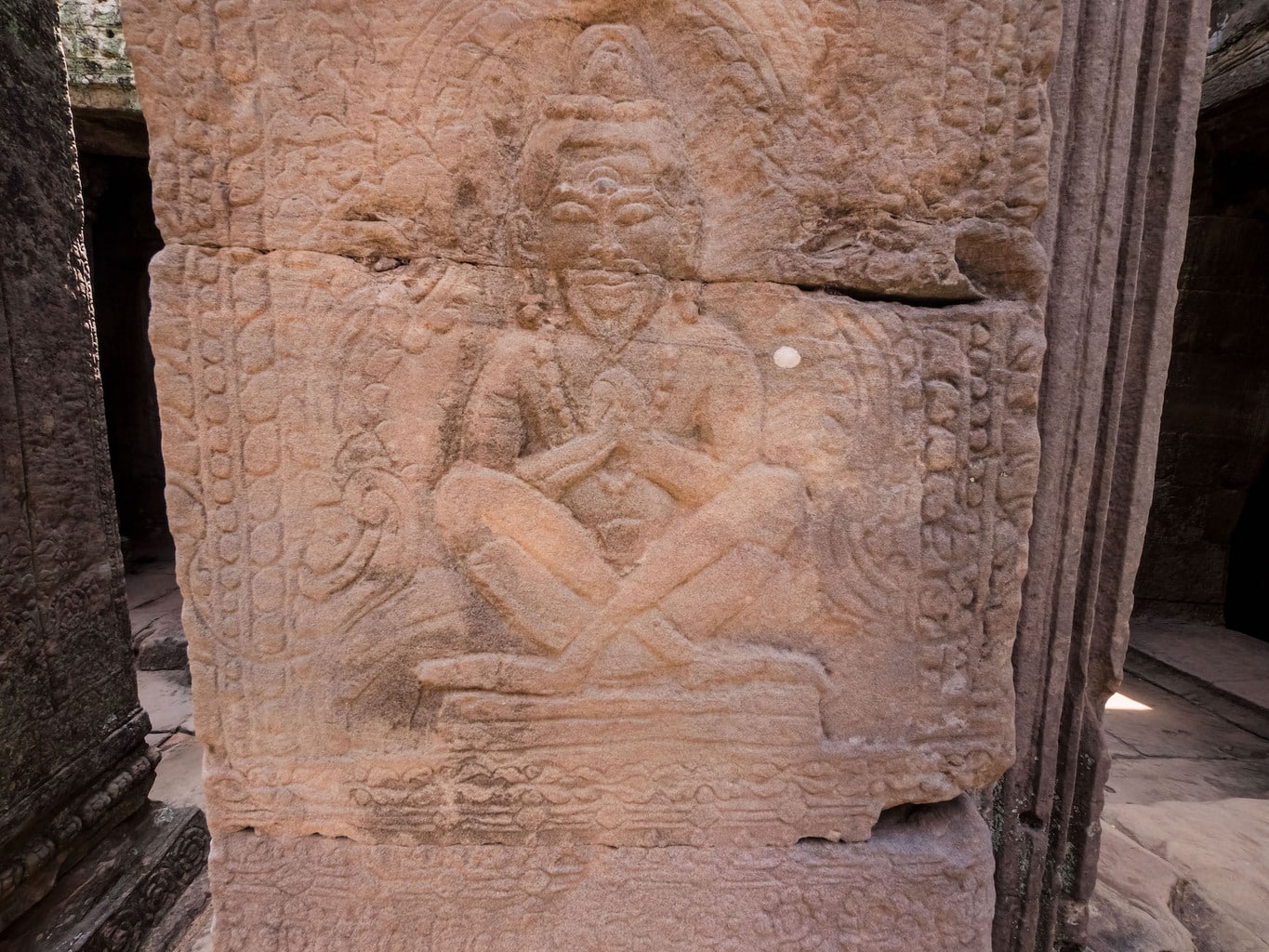
While there are so many more facts about Angkor, one of the most interesting I found was the reason why imagery of Buddha was defaced. After King Jayavarman VIII took power, he stated that Hinduism was the religion du jour.
He then proceeded with the very costly act (financially and religiously) of defacing almost every image of Buddha throughout Angkor Thom. Statues were decapitated, removed or, in a more humorous attempt, Buddha’s lotus position was changed, placing his knees upward.
He also added a beard and third eye to Buddha’s face so that there was a conspicuously more Hindu facade. A fine example of both the might of a king and a change in Khmer religious sentiment. That being said when Jayavarman VIII passed away, a new form of Buddhism entered Cambodia through his son-in-law, Srindravarman.
This was Theravada Buddhism, which is the dominant religion to this day with roughly 70% of Cambodians using it as their belief. It stemmed from Sri Lanka, through Thailand and into Cambodia.
5. Social involvement as a way of life
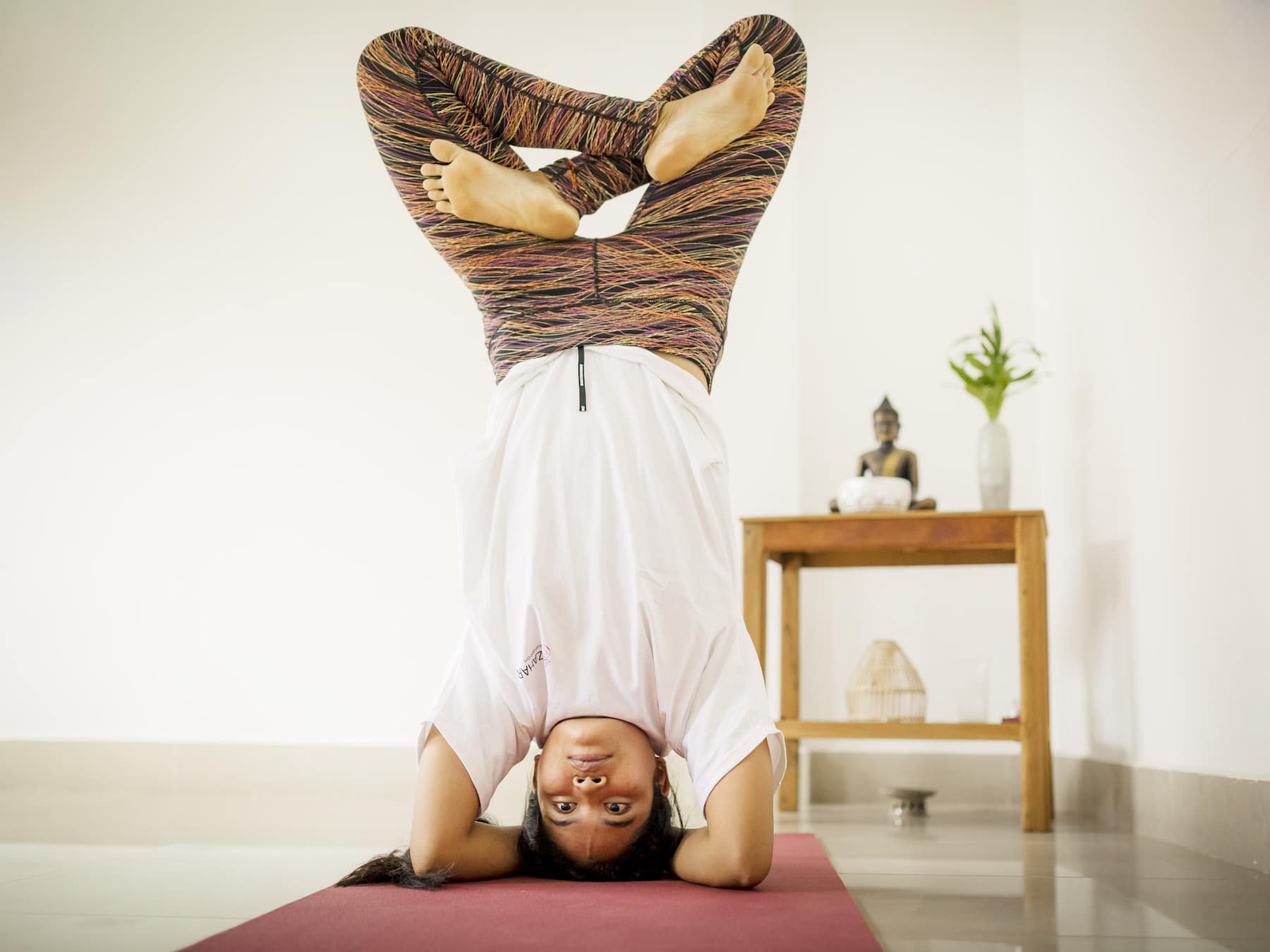
There are NGOs and charitable organisations all over Cambodia, and social entrepreneurship is a much-needed and embraced way of life and business. It’s all about helping the community and therefore, each other. It’s what we might call in the west “paying it forward”.
While I was in Kandal Village in Siem Reap, for example, I learnt that almost every single boutique and cafe on the small strip was in some way involved in helping those less fortunate individuals of Cambodia, not only through charity, but also social upliftment.
I met the lovely Thyda Sek, for example, who only sells locally sourced goods at her boutique Mademoiselle Thyda. She also runs the Azahar Foundation’s yoga studio a few stores down that take struggling Cambodian youth and teach them yoga. They then go on to become teachers for Azahar or can start their own practice. This is starting a fantastic cycle of social upliftment.
Many hotels including Shinta Mani Wild and Shinta Mani Siem Reap are focused both on environmental sustainability as well as social upliftment. Such hotels provide hospitality training to the underprivileged who have the chance of getting a job at the hotel after graduating.
On the other had, I also learned about the dark side of “charities” in Cambodia in the up and coming voluntourism industry. Some institutions claim to help uplift the social or natural environment, when in fact most of the donations go directly into the owner’s pockets. So please do your research before giving blindly to anyone with a sob story. By all means give your time, passion and money, but please conduct research before doing so. Corruption is prevalent in this developing country.
6. Not whiskey or oil, but gas

One of the first things I was told after landing in Cambodia was not to drink the whiskey on the side of the road. The driver had a nice chuckle to himself when he said that. I thought, oh, it’s probably fake or watered down.
Then I actually saw the bottles and realised why he said that. It’s not whiskey at all, but rather gas in whiskey bottles. Motorbikes are the mode of transport for most of the country and the way of driving is particularly Cambodian.
Bikes zig zag across the road without a worry in the world, and while your driver will state that accidents are rare without a blink of an eye, they are reportedly the leading cause of death in Cambodia. You will see cars in the center of a two lane road, and bikes driving on either side, back and front, up and down.
But the most surprising part is that there is no honking. It must be an unwritten law of some kind. Back to the whiskey bottles. When you pass side road stalls and see yellow liquid in bottles, that ain’t whiskey or oil you’re seeing but rather a cheaper form of gasoline that the usual gas station has to offer.
Note: Cambodian driving is on another level. So don’t freak out when your driver overtakes bikes into oncoming traffic. That being said, if you are fearing for your life, ask your driver to stop and get off, chances are there are better, less aggressive drivers out there.
7. Kpop is huge!
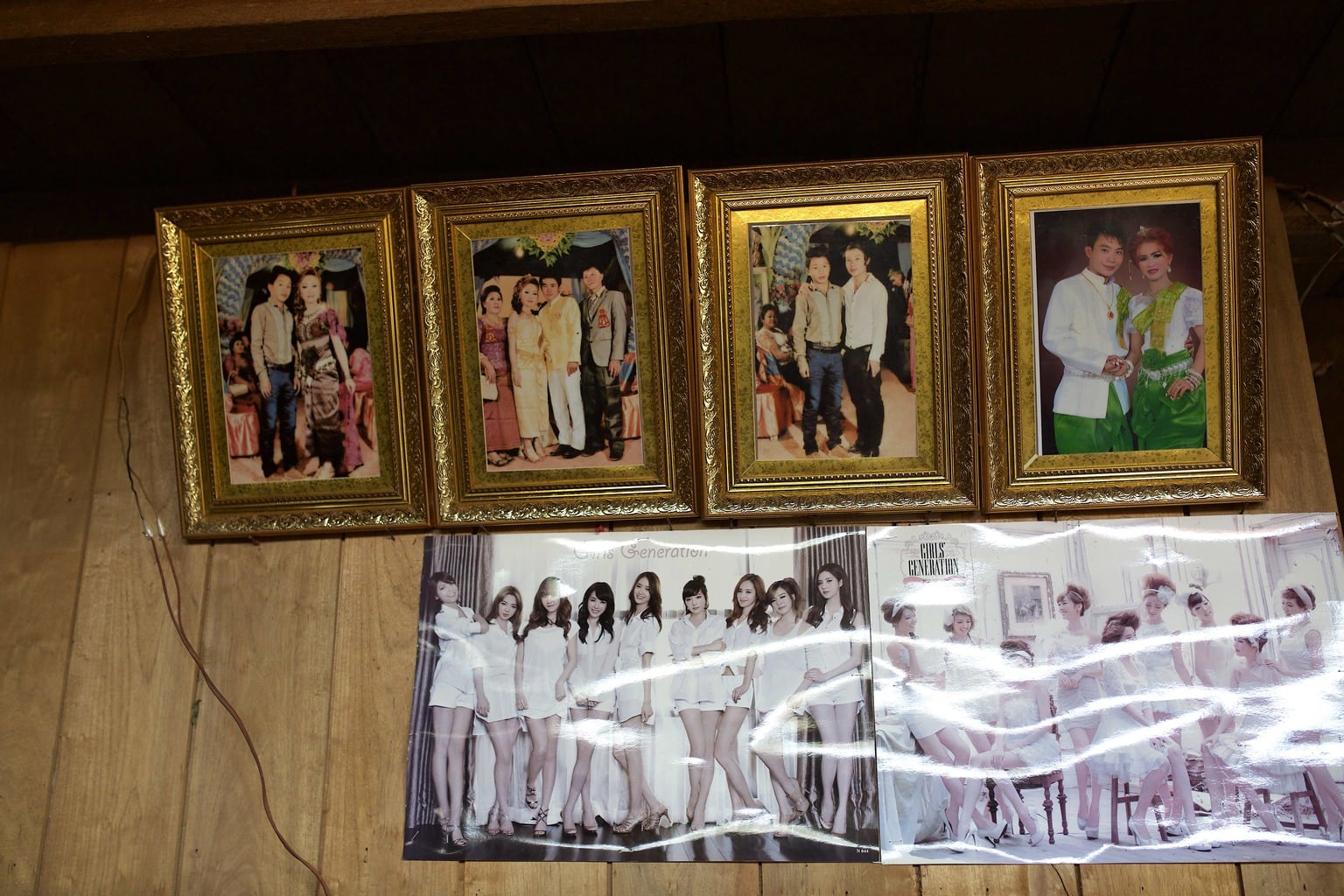
The spread of Hallyu (the Korean wave) has taken the entire world by storm and it did not miss Cambodia. I even saw a Kpop poster hanging on the walls of person’s house out in the jungle in Ratanakiri, Seoul has left a giant footprint.
While most other countries, like India, Japan, Germany and France help to maintain and restore the national heritage sites, South Korea is helping with infrastructure and as a result, throngs of Korean tourists and business people visit the land of wonder in droves.
There are restaurants selling Korean food splattered throughout the larger cities and Kpop stars shine on posters and in people’s’ hearts. Even the store owners at local markets can speak Korean to passing tourists, usually words learnt from Kdramas. North Korea also shares ties with Cambodia, so you will even find North Korean travelers, students and restaurants, like Pyongyang in Siem Reap.
My favourite discovery of Kpop in Cambodia was a few posters of Girl’s Generation and Big Bang in the most rural part of Ratanakiri, Koh Peak village on the Tonle San River. I also learnt that Rain was Toek Menghout’s favourite Kpop star, he was the head chef at Templation Resort in Siem Reap.
8. The ubiquity of the People’s Republic of Cambodia Party
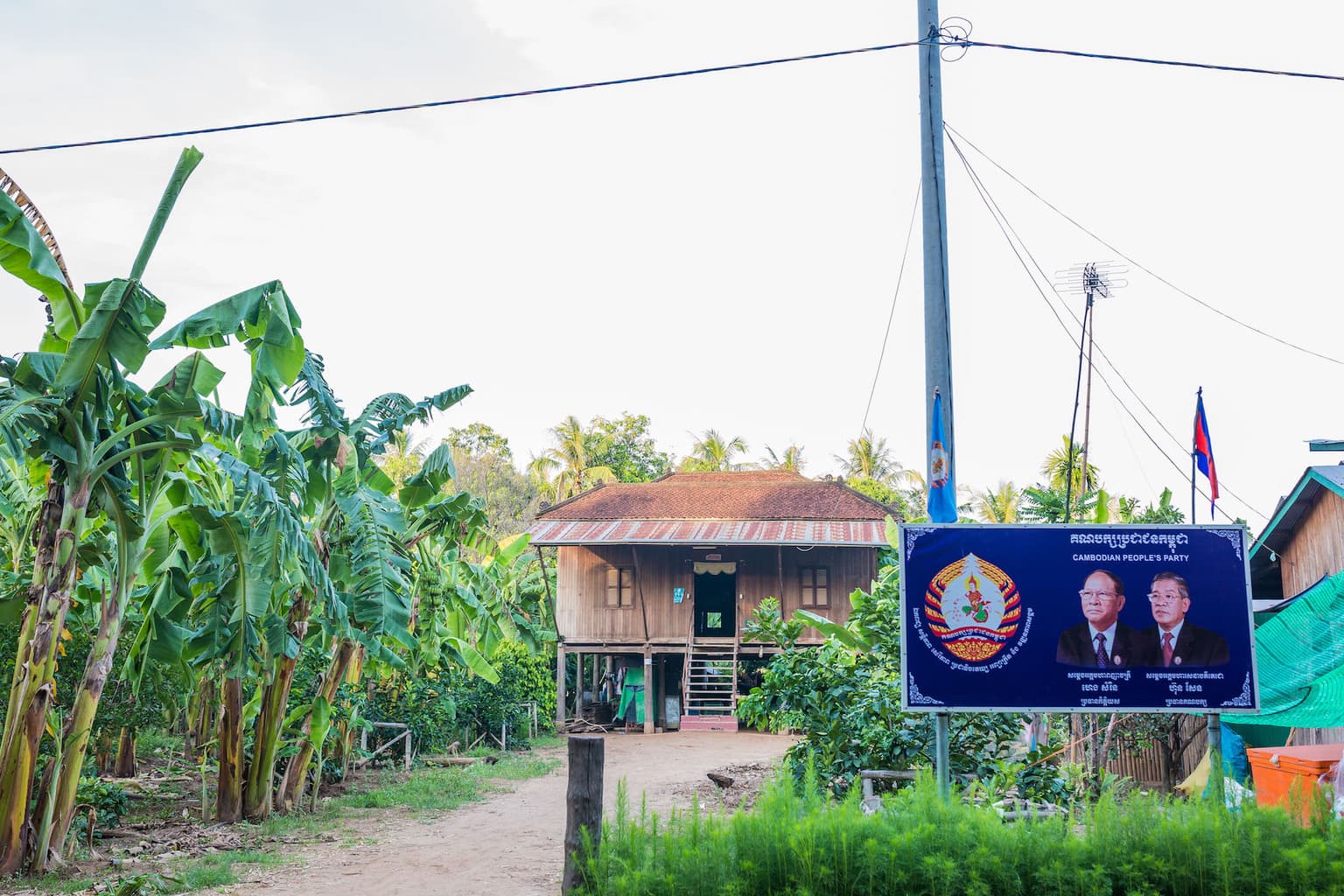
To get slightly political, we learnt about the the People’s Republic of Cambodia Party as it was election time in Cambodia. The signs of the leading party are pervasive, you will even see them brandished outside houses along the short path in Koh Trong island in the Mekong in Kratie Province.
One of our tuk tuk drivers explained that the signage was not out of support or solidarity, but rather the people in the houses were being paid to display these signs – almost a form of propaganda. Where the government gets the money to support this, I have no idea, but can only guess.
The same tuk tuk driver very passionately told us that at first people were afraid to speak out against the government, but they are starting to voice their opinions slowly. He said he hopes that one day everyone will publicly be able to speak their minds in a public form without being criticised or ridiculed.
We were also stuck in a major traffic jam from Kratie to Phnom Penh one day before the elections where swarms of people were wearing the light blue of the People’s Party, waving flags and singing. Children even got off school to show support. Apparently the government is even a bit more lenient with speed trapping during the elections to win favour from the people.
While I do not have enough information to comment on the ruling party, I will just say that I saw nothing of the opposition anywhere during the local elections and was told that this was due to a lack of funding among other things.
9. Dollars or riel – the choice is yours
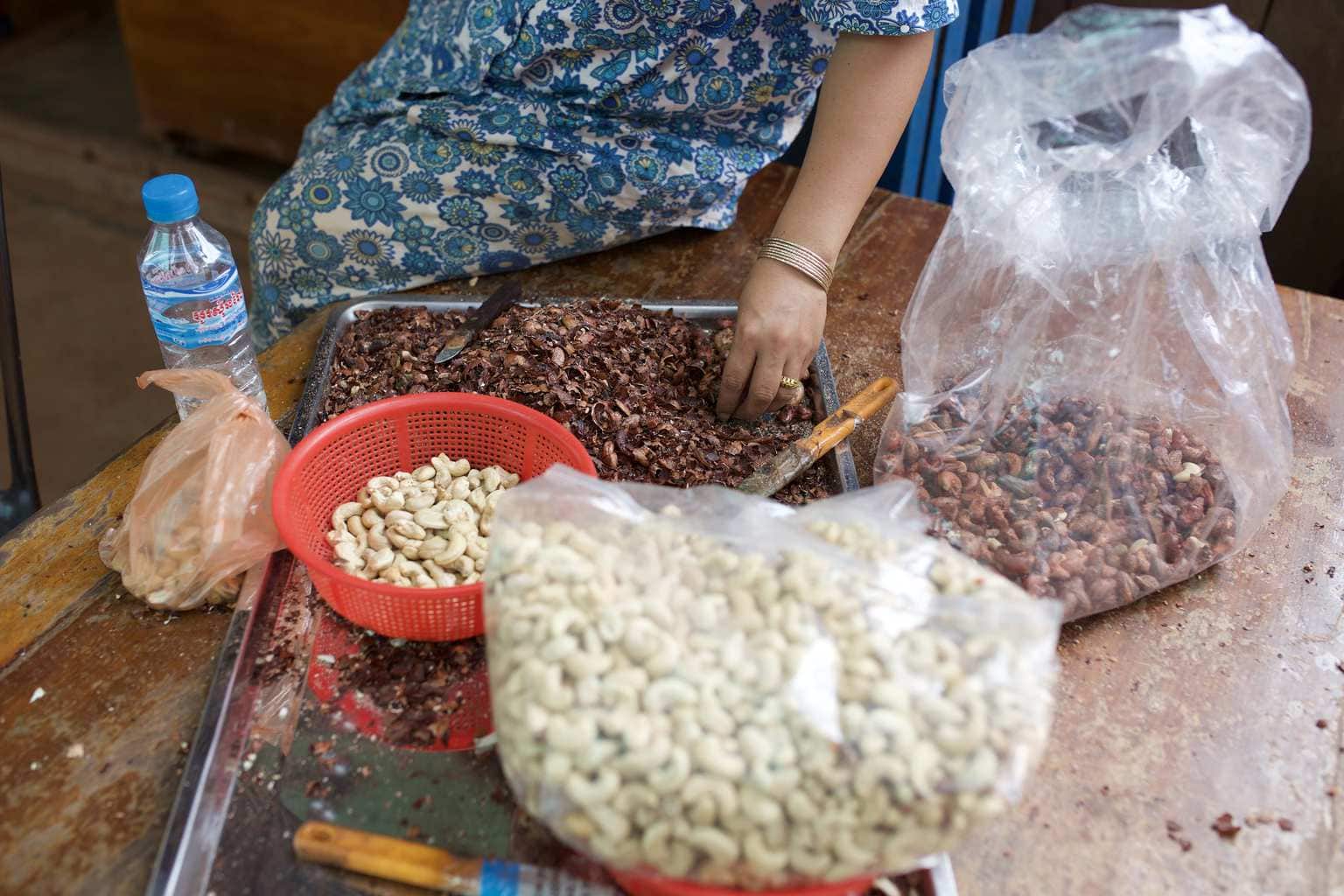
Before I went to Cambodia I wanted to exchange to Riel, but was told by MAADS.Asia who organised my trip, “dollars, riels, all is welcome in Cambodia”. I thought this was just an overstatement, so I brought both. Our guides were absolutely, 100% correct.
Throughout our stay, we used both dollars and riel everywhere we went. Heard rumours that you need riel in the more remote areas, not once were our dollars turned away. But maybe keep some riel just in case, I’d hate for you to be stranded without water in the jungle. Remember that paying in dollars will get you change in both currencies sometimes. A good rule of thumb: 4,000 riel equals one dollar, no matter what the exchange rate is doing on that day.
- Check if you need a visa, get help processing it at iVisa.
- Never ever leave without travel insurance. Get affordable coverage from World Nomads or long term insurance from Safety Wing.
- I find all of my flights on KAYAK. Check their Deals section too.
- Search for all your transportation between destinations on the trusted travel booking platform Bookaway.
- I book all my day trips and tours via GetYourGuide, they are the best and their tours are refundable up to 24h in advance.
- Get USD35 off your first booking with Airbnb.
- Compare hotels EVERYWHERE at HotelsCombined and book with Booking.com.
- Compare car rental prices at Rentalcars.com
